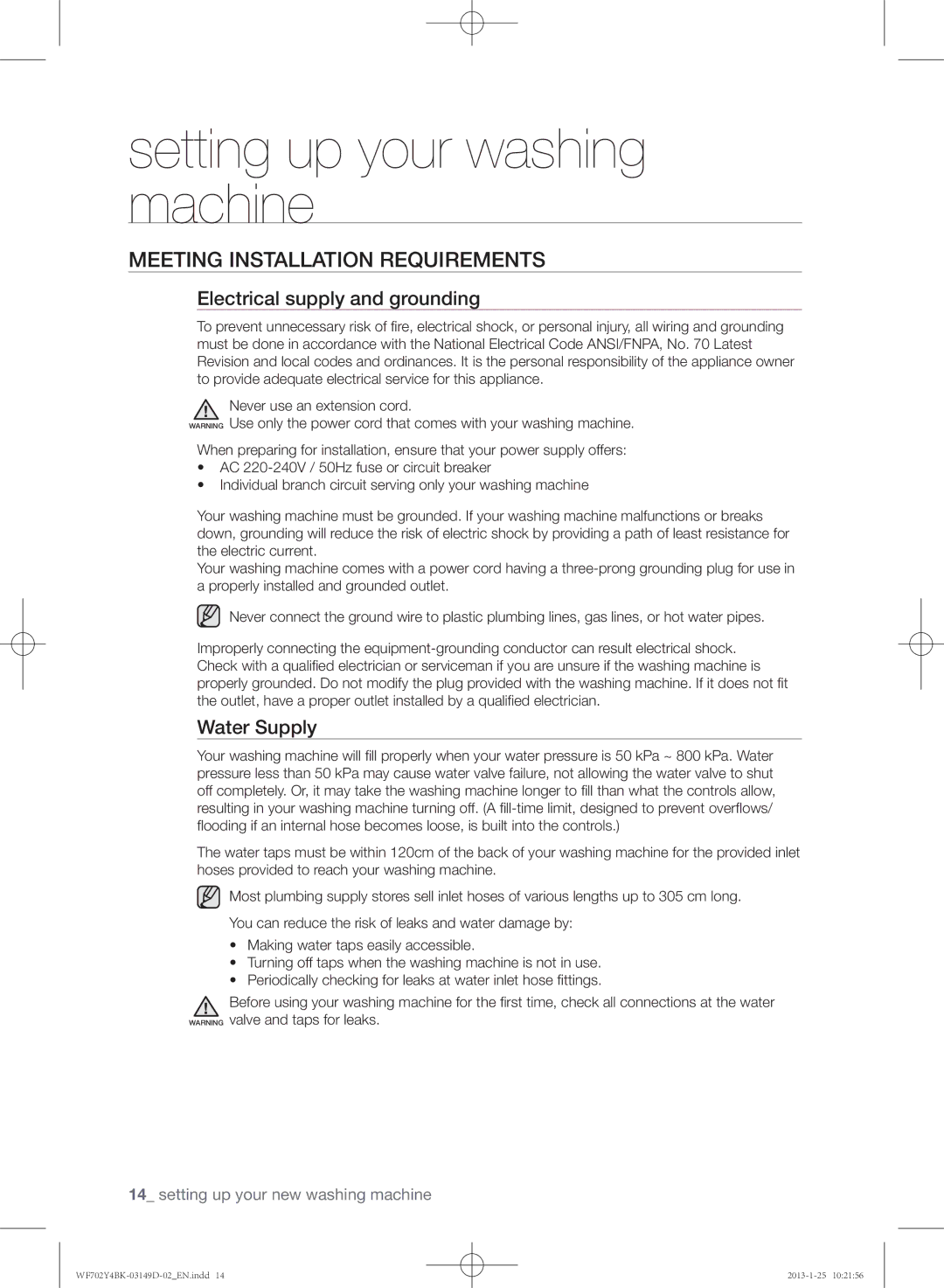
setting up your washing machine
Meeting installation requirements
Electrical supply and grounding
To prevent unnecessary risk of fire, electrical shock, or personal injury, all wiring and grounding must be done in accordance with the National Electrical Code ANSI/FNPA, No. 70 Latest Revision and local codes and ordinances. It is the personal responsibility of the appliance owner to provide adequate electrical service for this appliance.
Never use an extension cord.
WARNING Use only the power cord that comes with your washing machine. When preparing for installation, ensure that your power supply offers:
•AC
•Individual branch circuit serving only your washing machine
Your washing machine must be grounded. If your washing machine malfunctions or breaks down, grounding will reduce the risk of electric shock by providing a path of least resistance for the electric current.
Your washing machine comes with a power cord having a
Never connect the ground wire to plastic plumbing lines, gas lines, or hot water pipes.
Improperly connecting the
Water Supply
Your washing machine will fill properly when your water pressure is 50 kPa ~ 800 kPa. Water pressure less than 50 kPa may cause water valve failure, not allowing the water valve to shut off completely. Or, it may take the washing machine longer to fill than what the controls allow, resulting in your washing machine turning off. (A
The water taps must be within 120cm of the back of your washing machine for the provided inlet hoses provided to reach your washing machine.
Most plumbing supply stores sell inlet hoses of various lengths up to 305 cm long. You can reduce the risk of leaks and water damage by:
•Making water taps easily accessible.
•Turning off taps when the washing machine is not in use.
•Periodically checking for leaks at water inlet hose fittings.
Before using your washing machine for the first time, check all connections at the water WARNING valve and taps for leaks.
14_ setting up your new washing machine
